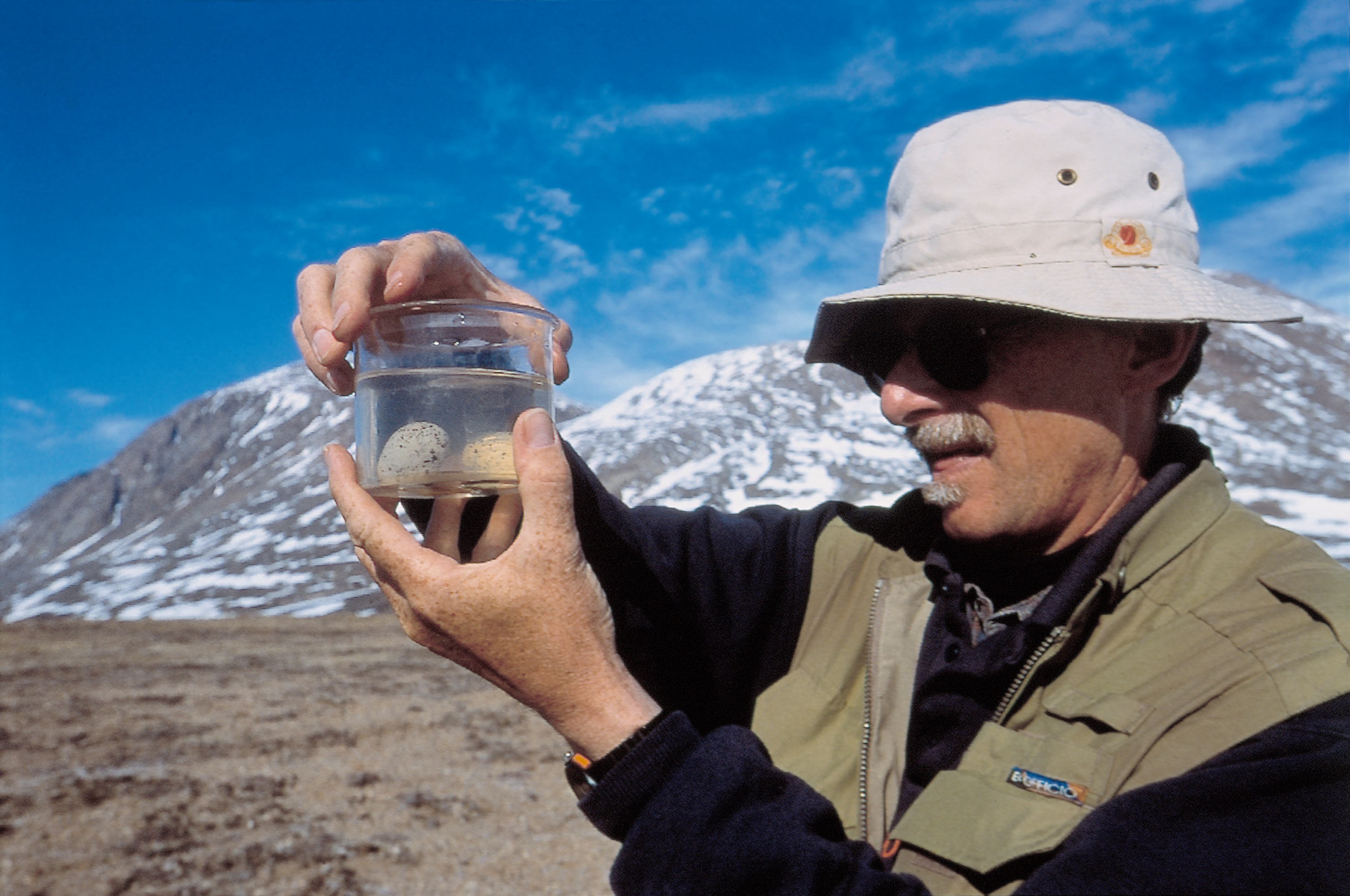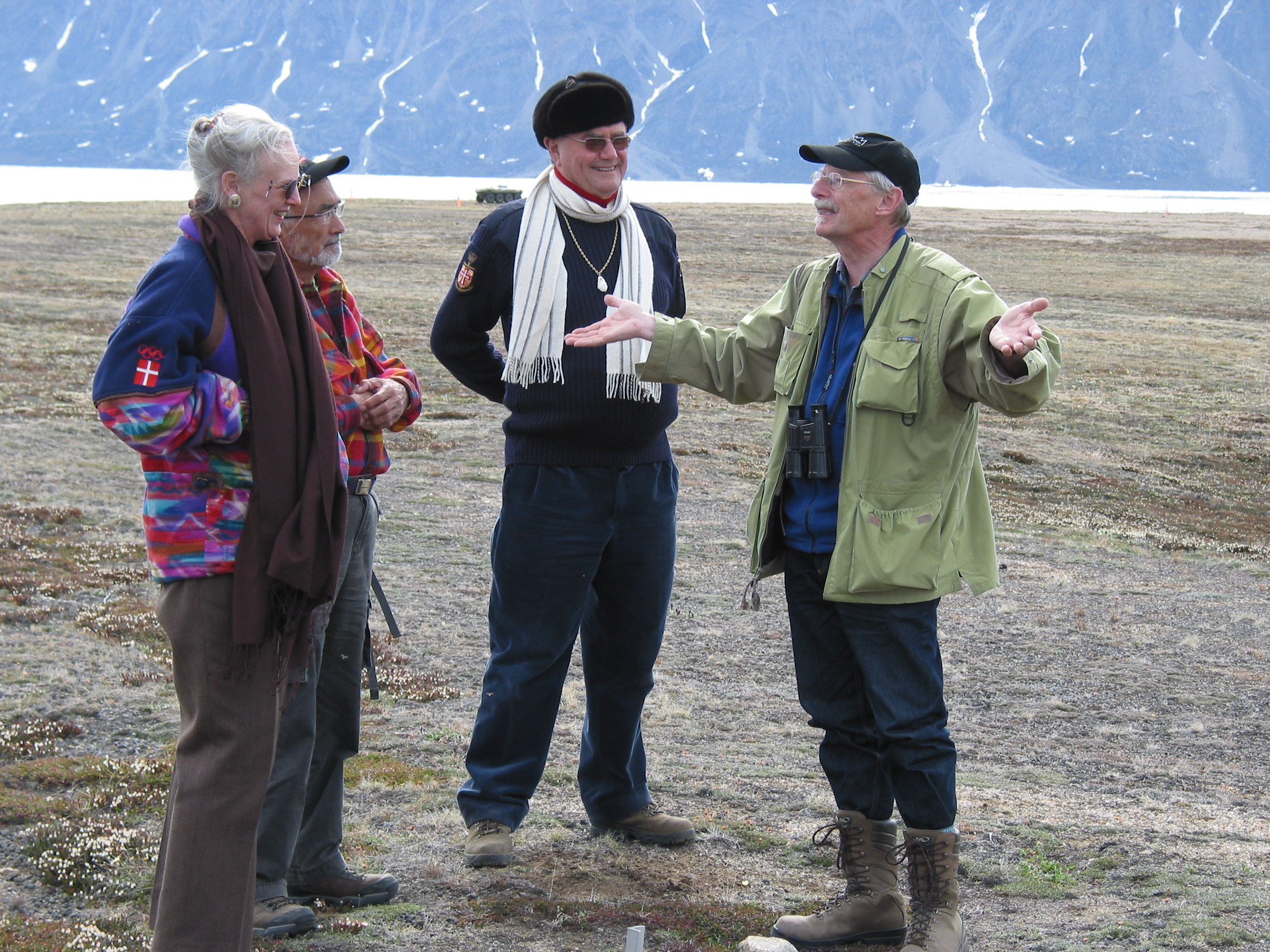GEM Scientist of the Month - July
With the 25-year anniversary of GEM coming up, we wanted to get back to the roots and present Hans Meltofte, who is one of the founding fathers of the monitoring programme, now known as the Greenland Ecosystem Monitoring programme. In this interview by Maria Scheel, Hans talks about the development of the monitoring programme and the establishment of Zackenberg research station.


You are currently working at Risø – can I ask you, what you are working on at the moment? As emeritus, I am currently working on the BioBasis bird data from Zackenberg. Also, since about 2 years and now slowly coming to an end we’re working on a huge monography on the changing bird fauna of Denmark since 1800.
Does this still allow for fieldwork actually? Well, I just came back from 6 weeks in the Antarctic, now having been there 7 times. Though not specifically fieldwork, we did record the sea birds and marine mammals that we saw and it was a lot of fun really, starting the journey from New Zealand and ending in Corona-hit South America. The results ended up in a small report on the net.
That sounds amazing. To start a bit more back in time, it is interesting to hear, how researchers have found their way into Arctic science - how did you get interested in the Arctic environment? Since childhood I wanted to go to the Arctic. I went the first time to NE Greenland for 2 years to work as a met assistant on a weather station far away from civilisation in 1969, enjoying summer hikes and winter dog sledge trips partly with Sirius, adding up to about 1500 km. This is where it started. Since then, I generally went to all places I could get to all over Greenland, both working on weather stations and joining expeditions, when I for example stayed alone in a cabin in Pearly Land on the top of Greenland for three months. One project took the next. From the early 60s I had also started to work on Danish field stations, especially observing birds and other biology. Later I worked as a manager of Danish field stations which already gave me experience on long-term monitoring a.o. on the Tipperne Reserve in West Jutland where we now have time series of more the 90 years. I came to Zackenberg with the supply ship to Daneborg and Mestersvig for the first time in 1972 and stayed for a few days at the trapping station.
So, how did your experiences with Greenland and managing Danish stations turn into running the Zackenberg Station? I worked for many years on the idea of having a field station in High Arctic Greenland to monitor the interannual variability in different biological parameters on birds, mammals, invertebrates and plants in relation to climate variability. The long-term monitoring approach was very much inspired by Christian Vibe’s doctoral thesis from 1967 on Arctic animals in relation to climatic fluctuations, when manmade climate change was not recognised yet. From the Zoological Museum at the University of Copenhagen we wrote a letter in 1986 to the Ministry of Greenland arguing for a research station in the NE Greenland National Park. When we got a positive response, a group in the ministry was formed and we started discussing the location and financing and so on, where we also got a lot of support from the geophysical community at KU. In 1991, we went to several places, also to the Zackenberg valley to look for suitable spots and we ended up recommending Zackenberg as the most suitable place. First of all, we found almost all biological and topographic components of the Greenland High Arctic ecosystem represented here, it was close enough to Daneborg with its supply ships and possibility of help in winter season, as well as sufficiently far away to be rather pristine. In addition, it was located well within several gradients such as humid outer coast to arid continental near the Greenland Ice Sheet and north-south between the Mid-Arctic and the High Arctic.
Was it a challenge to create a station in a National Park? On the contrary, it was supporting it rather, because its status within the Man and Biosphere scope of the UN demanded for regular monitoring. If I remember correctly, in the beginning we only had BioBasis, and GeoBasis also included ClimateBasis, which was organised by the KU Institute of Geography taking care of the geophysical elements, while the then Danish Polar Center mainly took on the biological sampling and the logistics of the station.
After 25 years of monitoring now, which are the biggest successes you see? In some way we have found more stability than in other parts of the Arctic. From a biological point of view, it is mainly the July temperatures that we have seen increasing significantly, while, for example the bird fauna stayed rather stable and resilient apparently. The problems that most tundra birds face seem mainly to be found in the staging and wintering areas like habitat loss and hunting. This is not to say that there are no worries about the future of the Arctic biome. There are lots. We are only just beginning to see them.
With the establishment of Zackenberg and a number of other research stations in the Arctic, we are now able to see what is going on there in a much more quantitative and nuanced manner than before. But the way we work at Zackenberg is outstanding. Many of us have been giving presentations about it internationally and people are just impressed. In most other stations, long-term projects run for 3-5 years, each employing their own instruments. At Zackenberg, long-term really means long-term; researchers coming for their own fieldwork can relate their data to e.g. how does this year compare to the long-term timing and variability of snow melt, temperatures, flowering, invertebrate emergence, you name it.
These long-term records give us great vision in long-term baselines and fluctuations and documenting, what an extreme really might be. Although one conclusion is also that even 25 years are too short for understanding the whole network of influences on the different components of the local ecosystem.
... and where do you still see place for improvement? More money! Of course, there are always economical limits to what you can do, but I have a feeling that limited funding is a problem at Zackenberg. However, with the increasing political competition in the Arctic, there may be hope for more support.
Do you have a special memory from fieldwork that made you return so often? The entire Arctic environment has always fascinated me deeply. When I came up there as a young man in 1969, it was like an adventure. From hikes to dog sledges to boat trips. The tundra, the muskoxen, the sea, the ice, the weather – and not the least the birds! The difference between that time and most people who now go to the Arctic is that in those days many scientists went through the entire annual circle several times with the long and dark winters, spring, summer and the most beautiful autumns you can imagine. When the first snow bunting appears after 5 months of winter you are as happy as ever! The year round experience gives you a much broader perspective on what the Arctic is and how living conditions are there.
What is your preferred way of spreading your science? Public outreach has always been important to me. Actually, I think that it is such a privilege to be a scientist that it is an obligation to ‘spread the word’ to those who pay. Therefore, I have written hundreds of articles and contributions to public debates about nature together with several books.
That sounds like enough. I feel a little bit shy about mentioning this, but at some point, I was part of 23 boards and committees of national and international nature conservations NGOs, which by now is down to 11, I think. It is so much fun both to take part in the research and in the public debate.
To come to an end, I have one last question for you: Do you have an advice to the new generation of younger scientists in the making or governments in the current setting? That is a good question. Actually – I am deeply concerned. In my lifetime the kids’ relation to nature has weakened considerably. Now kids only spend a quarter of the time outside that their grandparents did. The electronic devices have taken over their attention. Even those nerds, who half a century ago would have captured tadpoles and watched them grow in an aquarium now play games. There are many smart and very skilled students, but most do not have the deep experiences from childhood under their skin. Most Danish kids cannot tell the difference between oak and beech or great and blue tits anymore and that spills over to Arctic research, where most go to the Arctic to study during a few summer months at the most, but do not get the Arctic under their skin. But I do see hope for a revitalisation of the desire for contemplation.
Thank you for having taken the time, Hans!